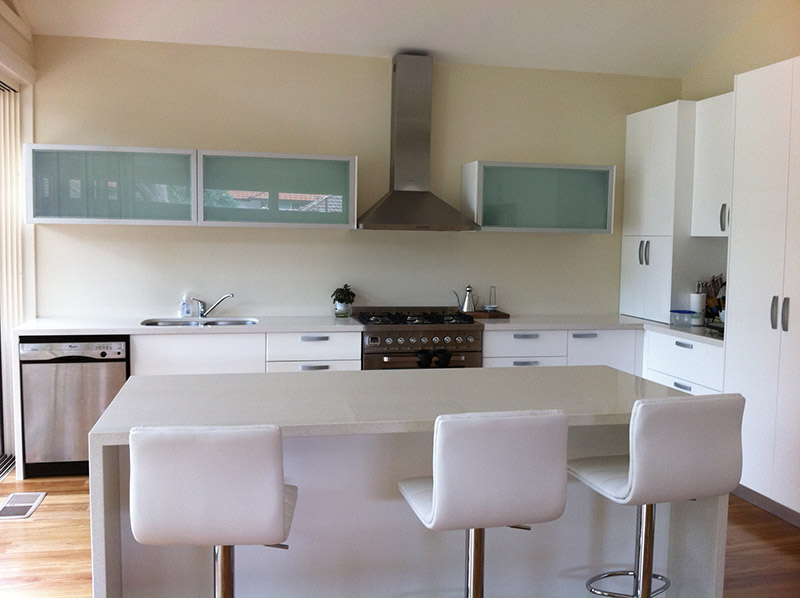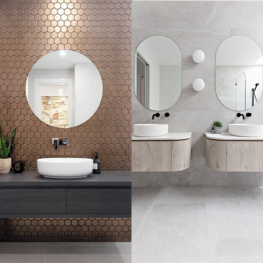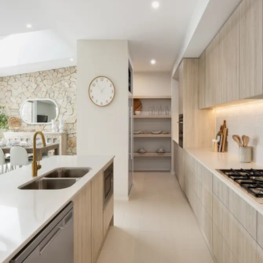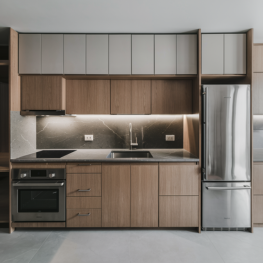If your kitchen renovation is in progress and you’re looking for kitchen designs for a small kitchen, then you need to consider the different cabinet types that come with different build quality. The four basic kitchen cabinet types are as follows:
- Wall cabinets – By and large standard upper cabinetry is 12 inches deep; however, they can be enhanced to 17 inches on some custom and semi-custom applications.
- Base cabinets – Standard base cabinetries are 36 inches tall and 24 inches deep. Nevertheless, depth can be enhanced up to 27 inches on some custom and semi-custom applications. For easy accessibility, base cabinetry is fixed above a 4-inch recessed riser referred to as a toe kick.
- Special CabinetUnits – Special units make optimal use of square footage. These include cooktop/ sink fronts, bottle racks, hutches, suspended units and corner cabinets.
- Tall Cabinets – Usually, for pantry space and broom storage, tall cabinets come in 83.5 inches of standard height.

Quality of Kitchen Cabinet Matters
Purely based on their build quality, cabinets are classified into four main categories viz. (1) stock, (2) ready for direct installation or ready for assembly & installation, (3) custom and (4) semi-custom. Before looking for the right cabinetry, it’s imperative for you to have a budget in place first, and then browse cabinetry lines and alternatives that fall within your set budget. Often cabinetry costs are calculated in linear feet that range approximately between $50 per linear foot and $500 per linear foot. Kitchen cabinet Installation costs may come included but they are usually quoted separately. Whether you’re buying semi-custom, custom, stock cabinetry, or ready for direct installation or ready for assembly & installation, always look for quality build material. Above all, have an open mind to consider well build cabinetry that may be affordable but looks incredible and may be better suited for many applications.
Stock Cabinets
Stock cabinets are a basic and inexpensive option that can be bought pre-sized from the concerned manufacturer. Stock cabinets are manufactured in bulk quantities and are available in fixed sizes, but can’t be modified, which makes them less flexible for existing spaces. Using standard unit sizes, these cabinets are manufactured on site. Stock cabinets are size-specific and are measured in the incremental of 3-inches. Depending on the manufacturer, stock cabinet materials may vary from solid wood to particleboard covered with melamine or plastic laminates. Moreover, they come with a limited choice of accessories. Stock cabinets bought over careful consideration can offer modish style, well-built quality at an affordable price point. Installation cost is not included in the purchase price.
Custom Made Cabinets
When you custom-make your cabinetry, you are free to choose the material, style, finish and accessories, all of your choice; there are no restrictions whatsoever. Custom made cabinetry can be made for spaces of any size. With innovative kitchen designs, cabinetry can be customised to suit the specific sizes of the most unusual spaces. The advantage of custom build is that you get premium quality, robust hand-made construction of experienced artisan. It’s built similar to the furniture.
Semi-Custom Cabinets
Semi-custom cabinets are specially ordered cabinets. They facilitate some size modifications and generally provide a better quality of cabinet build. Semi-custom cabinetry offers a wider range in both material and style options, and with respect to its price, it sits comfortably within the mid-range preference.
Ready for Direct Installation or Ready for Assembly & Installation
With millimetre meticulousness to your exact specifications, cabinetry is made and comes either fully assembled, ready for installation, or cut out to exact size measurements and drilled, ready for assembly and installation, with complete hardware that is needed for installation.
The Bottom Line
Indeed, choices abound for custom kitchen cabinets in Sydney. Generally, semi-custom cabinets include installation charges whereas custom cabinetry often includes installation and delivery charges.


















